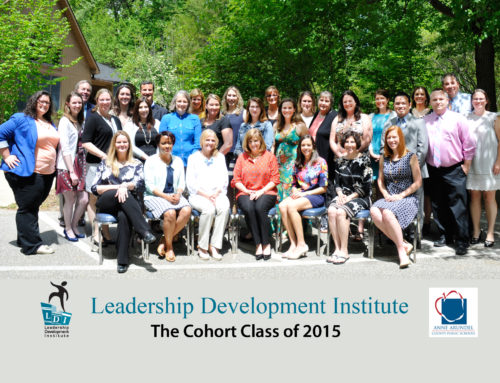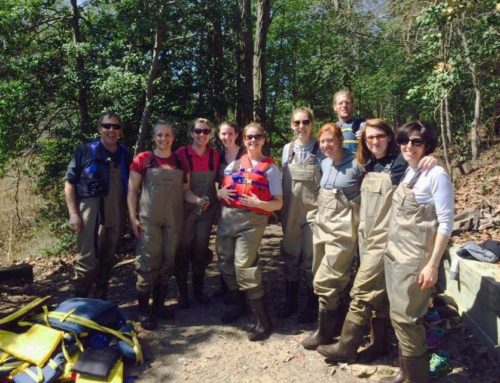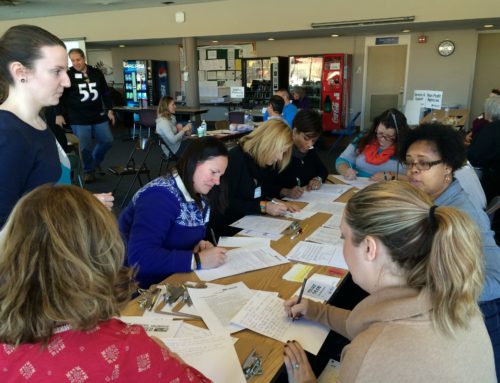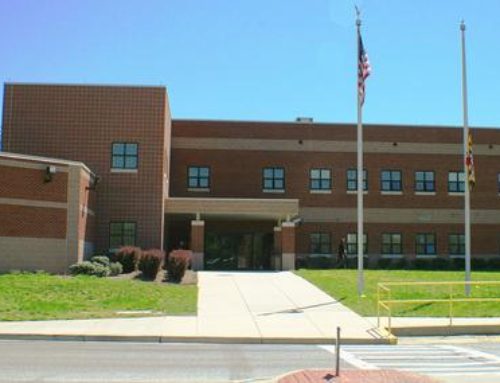Understanding AACPS Administration, Local Government & Decision Making
October 24 & 24, 2014
I’ll be honest with you: when I heard that our next two days would be spent discussing administration and budgets I was interested, but not exactly counting down the days. I care about money of course and even enjoy discussing funding, having worked on both the writing and spending side of grant budgets. Spending two days hearing about the flow of money in the county and school system on the other hand—not my first choice for a Friday night.
Fifteen minutes into class, however, I was hooked.
We spent the evening talking with Alex Szachnowicz, the Chief Operating Officer for AACPS. He gave us a crash course in AACPS’s nearly $1.1 billion budget and in three hours I learned more about Anne Arundel County (AAC) policy and administration than I had picked up on my own over a lifetime living in this county.
For the first time, it became clear how much AACPS contributes to the economic development of the region. We are one of the largest employers in AAC (second only to Fort Meade) and own more land than any other individual or organization in the county. Of our nearly $1 billion operating budget, almost 82% goes directly to the people, from teachers to bus drivers to central office personnel, who keep the schools running and work to provide our students with the highest quality of education possible. And this investment pays off. According to an independent study conducted by BEACON at Salisbury University, for every $1 that the county puts into the school system there is $1.36 returned. In addition, every class of AACPS High School graduates offers a lifetime earning potential of $1.4 billion.
Great, right? The school system costs money but it is an essential business within the county. Our schools can raise home value by 15%, in addition to the undeniable importance of educating our future citizens. We are, in short, a key player in the economic landscape of this county. Then the conversation turned to the source of our funding.
Meeting the County Government
What we got was a more complete understanding of how tight money is for every public entity within the county. Senator Riley and County Councilman Walker are not educators, which reminded me of the larger picture at stake. While AAC has nearly 500,000 residents, only 27% of families in the county have school-aged children. Our county is attractive to residents because, in part, of relatively lower property taxes, making it difficult to raise taxes. To supplement its income, the county can turn to business taxes, but walks a fine line there as well. AAC depends on business to drive the county’s economy and so needs to be attractive for potential business investors.
With such limited revenue streams, before more money can go to AACPS, it must first be taken somewhere else. While no one tried to deny the importance of a teacher, so too could no one deny the importance of a firefighter or police officer whose jobs must also be squeezed out of a thin county budget. AACPS already receives approximately 45% of the budget and as elected officials, it is the job of the state congress and county council to listen to its constituents and allocate funding based on the county as a whole.
What became clear to the class was that we don’t know what we don’t know. Until this weekend I didn’t understand the interplay between the school system and county administration. While the media offers its own bias, I had never before had the opportunity to hear both sides of the coin in terms of the tough questions that have to be asked when balancing both the interests of the county and the budget.
While debriefing, Barbara lamented the missing space for different opinions to come together and discuss the problems at hand. And, even more importantly, how do we give our students the opportunity to share their own voices in those discussions? As Laura suggested, much of it begins with our families—helping all families understand how they can have their own voice in the county to advocate for their priorities and take responsibility for their role as members of the AACPS community.
Mike Leahy, newly appointed city attorney, Board Member for the 21st Century Education Foundation, and former AACPS Board Member, joined us later in the morning to offer insight into the history of the City of Annapolis and its relationship with AACPS. And he responded, in part, to this need: “As educators,” he said, “the most important thing you can do is instilling self-responsibility [in your students]…If you believe in people, they will believe in themselves.”
So where do we fit in? On Friday evening Linda asked Mr. Szachnowicz how to be a good leader and his response spoke to why we were in the LDI in the first place: “Don’t ever give up on a life-long education;” stay passionate and stay informed not only about education, but also government and politics.
Through the LDI I can feel myself being pushed to learn more—to go beyond what I know and what I thought I knew to start to ask what I don’t know. I can’t say what will come, but October’s session left me hungry and I am ready to take in whatever I can.
Almost 60% of AACPS’ operating budget comes from the Anne Arundel County funds. Tax caps, approved by county residents in 1994, limit the “piggy-back” tax that the county can collect, meaning that the amount of money available to the county council—and thereby the public school system—is extremely finite. While our county continues to grow in both student population and innovative ideas for education, the amount of per pupil contribution from the county council has stayed almost the same since 2008. (State maintenance of effort laws require that each year the county spend at least as much per pupil as spent the previous year. Whether or not the county increases per pupil spending depends, as with any government entity, on available funds and the priorities of the county and of the county’s leadership). In fact, based on the projected revenue and expenditures for Fiscal Year 2016 (the 2015-2016 school year), AACPS will need to continue to find additional revenue sources to balance the budget.
The class asked smart questions— What was the purpose of the tax cap and what does it say about the political landscape of the county? How can we attract and keep great teachers when AACPS salaries aren’t competitive within the state? What creative funding sources are available? As the evening progressed, it was clear that many of us were frustrated. We are the choir who know how important AACPS is to this region, we understand that we are drops in the bucket of that 82% personnel costs, and we get how tough it is to stretch limited funds and still give our students the education they need to be successful in this high-tech 21st century. We need money and every year we need more of it if it to meet the high expectations of our students and families. But the outlook seemed pretty bleak.
So we were ready for Saturday’s session where we met Senator Ed Riley and County Councilman Jerry Walker, both of whom offered their time and perspective on the county’s budget and the allocation of funding. Armed with last night’s new-found knowledge, we were ready to hear the justification behind the static funding for AACPS.






